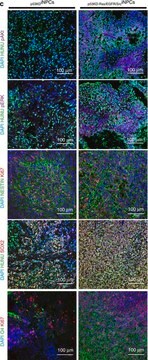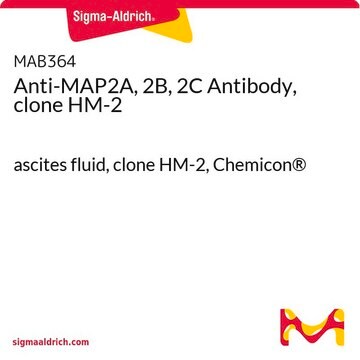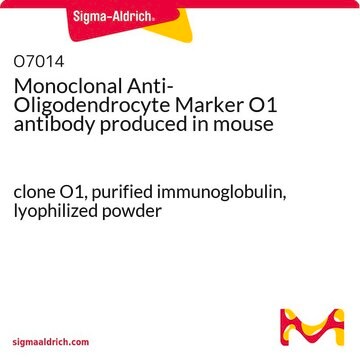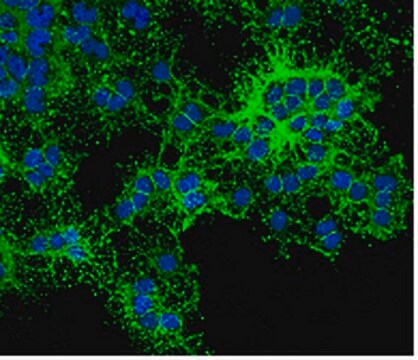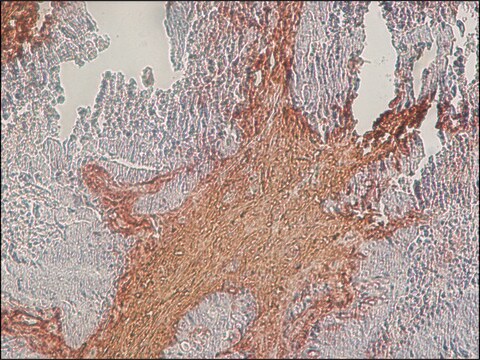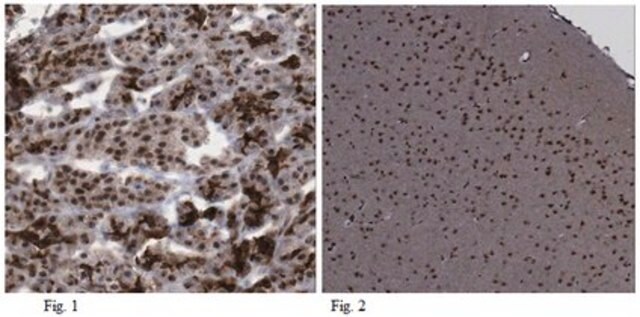MAB344
Anti-O1 Antibody, clone 59
clone 59, Chemicon®, from mouse
About This Item
Produits recommandés
Source biologique
mouse
Niveau de qualité
Forme d'anticorps
saturated ammonium sulfate (SAS) precipitated
Clone
59, monoclonal
Espèces réactives
chicken, rat, mouse, human
Fabricant/nom de marque
Chemicon®
Technique(s)
immunohistochemistry: suitable
Isotype
IgM
Conditions d'expédition
wet ice
Modification post-traductionnelle de la cible
unmodified
Spécificité
Immunogène
Application
Note: 01 is a lipid which is released from the membrane by alcohol.
Optimal working dilutions must be determined by the end user.
Neuroscience
Neuronal & Glial Markers
Forme physique
Stockage et stabilité
Remarque sur l'analyse
Oligodendrocyte culture, Brain
Autres remarques
Informations légales
Clause de non-responsabilité
Code de la classe de stockage
10 - Combustible liquids
Classe de danger pour l'eau (WGK)
WGK 2
Point d'éclair (°F)
Not applicable
Point d'éclair (°C)
Not applicable
Certificats d'analyse (COA)
Recherchez un Certificats d'analyse (COA) en saisissant le numéro de lot du produit. Les numéros de lot figurent sur l'étiquette du produit après les mots "Lot" ou "Batch".
Déjà en possession de ce produit ?
Retrouvez la documentation relative aux produits que vous avez récemment achetés dans la Bibliothèque de documents.
Articles
Human iPSC neural differentiation media and protocols used to generate neural stem cells, neurons and glial cell types.
Protocoles
Step-by-step culture protocols for neural stem cell culture including NSC isolation, expansion, differentiation and characterization.
Notre équipe de scientifiques dispose d'une expérience dans tous les secteurs de la recherche, notamment en sciences de la vie, science des matériaux, synthèse chimique, chromatographie, analyse et dans de nombreux autres domaines..
Contacter notre Service technique